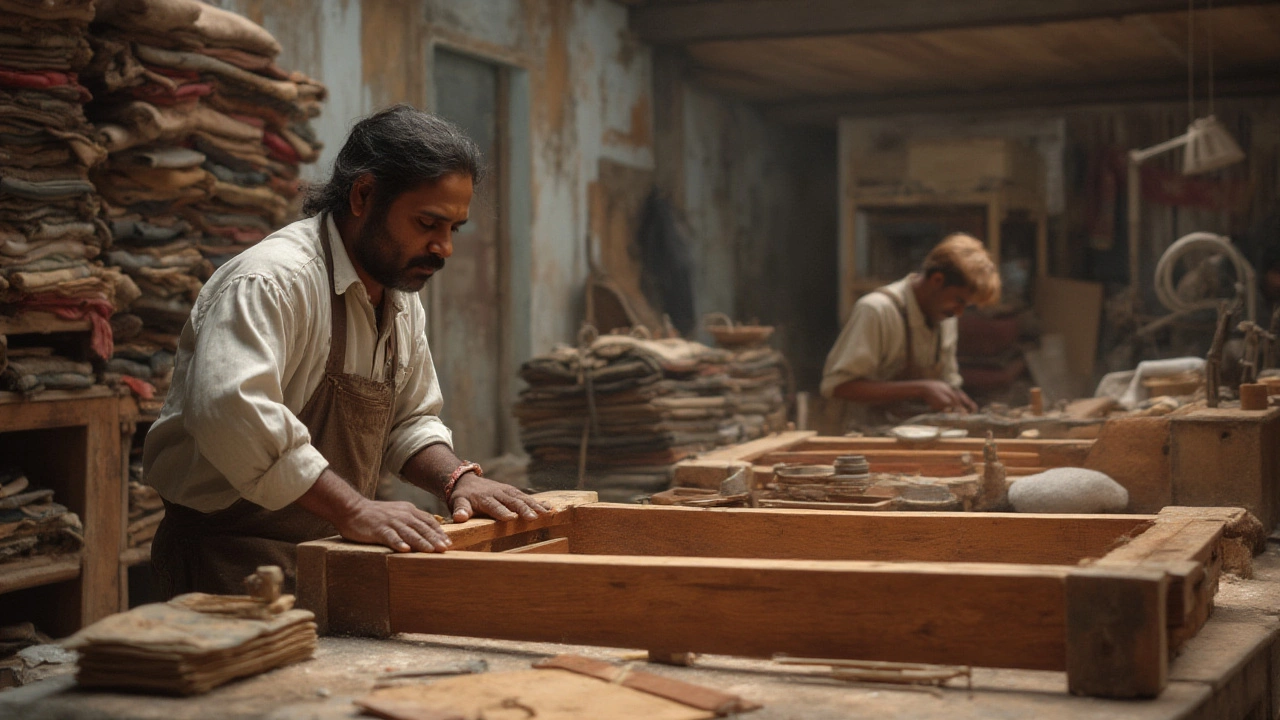Ever wondered why some couches seem to fall apart after a couple of years, while others look fresh even after years of use, kids, and pets? It’s wild how much difference the right choice can make. Most of us want a couch that actually survives the daily grind—spilled coffee, puppy claws, kids jumping, and movie night crumbs. So, what kind of couch is built to outlast trends, fads, and your toddler’s relentless energy?
What Makes a Couch Durable?
When people ask about the most durable couch, it’s not just about the fabric—it’s about the whole package, from the inside frame to the outer layer you can touch. Longevity in a sofa boils down to three main things: the type of frame, the quality of the filling, and the kind of upholstery. Let’s start from the inside out.
First up: the frame. The sturdiest sofas usually have frames made from kiln-dried hardwood like oak, ash, or maple. Why kiln-dried? Because the process sucks all the moisture out, preventing the wood from warping and cracking over time. In contrast, softwoods or plywood might cost less but tend to sag or break earlier. (Not to mention particleboard, which is really made for temporary furniture—good luck if you move house!)
The joints on a durable frame get attention too. You want sofas with dowelled, screwed, and glued joints—none of this stapled-only business. Better still if there are metal brackets for extra reinforcement. Cheaply made couches often hide shortcuts inside, so ask about construction, or check the specs if you're shopping online.
Next is the filling. High-resilience (HR) foam wrapped with fiber or down cushions sticks around longer—this combo gives comfort and bounce-back, but doesn’t go limp after a year. Couches filled mainly with low-density foam or polyfill lose their shape fast. For real staying power, some luxury sofas even add coil springs, which help with both support and lifespan.
Now, upholstery fabric. This is what takes the brunt of life’s chaos. If you’ve got pets or kids, pay attention to the number called the “double rub count.” It’s part of a test where machines rub the fabric until it wears away. Commercial-grade fabrics handle 30,000+ double rubs; residential-grade options start around 15,000. The higher, the better. Leather is an all-star for wear and tear—especially top-grain or full-grain, which get supple but don’t crack nearly as fast as bonded or faux leather. For fabric fans, tightly woven textiles like microfiber, canvas, or performance-grade polyester fight stains and frays superbly.
Even color matters: darker shades and subtle patterns hide spots and wear marks. Meanwhile, lighter, delicate colors show stains, so unless you’re a magician at stain removal, steer clear if you want longevity.
The Strongest Couch Frames
Most people never see the shape of a couch’s skeleton, but it’s the frame that defines whether your sofa will survive years of daily use, or collapse the first time someone flops down too enthusiastically. Strong frames are the backbone—literally—of a long-lasting couch.
Kiln-dried hardwood gets the gold medal here. According to Furniture Industry Research from the Australian Furnishings Association (AFA), couches with solid oak or ash frames last upwards of 15 years—double what you get from pine or softwoods. If you want a bulletproof couch, look for solid maple; it’s dense and doesn’t flex, minimizing squeaks and sagging. Avoid couches made of particleboard, which is basically glued sawdust pressed together. These are notorious for splitting or crumbling after relatively little use. A peer-reviewed study from the University of Technology Sydney even went as far as calling particleboard “unsuitable for long-term furniture exposed to frequent movement.”
The way joints are connected matters too. Mortise-and-tenon joints, corner blocks, and reinforced metal brackets deliver real staying power. Manufacturers usually showcase these details in product descriptions if their couch is well-made, so take the time to read before buying.
Some modern couches come with metal frames. While steel can be incredibly sturdy and isn’t prone to pest damage, it also tends to be heavier and, depending on the finish, may not be as visually warm as wood. Hybrid frames (wood main structure, metal for support rails) are striking that balance between style and lasting power. As a tip, give a couch a little shake in-store—does it wobble? Avoid it.

Which Fabrics Survive the Test of Time?
The outer layer faces life’s messes head-on, so choosing resilient upholstery is critical. Curious about the fabric battle royale? Here’s what you need to know.
Leather—especially full-grain and top-grain—is king. Not only does it get softer the more you use it, but it shrugs off most stains, and a quick wipe-down usually erases sticky disasters. Leather couches don’t love direct sunlight, though—it can dry them out, so keep them out of the sunblast or use protective leather conditioner twice a year. In 2024, a survey by Choice (Australia’s consumer advocacy group) found that 79% of people said their well-cared-for leather couches lasted 10+ years, compared to under 50% for standard polyester blends.
Microfiber is a real lifesaver for families and pet owners. It’s synthetic, super-tightly woven, and almost impossible for pet claws to snag. It repels spills because the fibers are finer than a strand of hair, making liquids bead up before they soak in. Still, go for “performance” microfiber if you want to avoid the dreaded flattened surface over time.
Outdoor-grade fabrics—think Sunbrella or Apollo—are sneaking indoors these days. These are made to survive rain, wind, and ultraviolet rays, so when you bring them inside, everyday dirt and little accidents don’t stand a chance. If you live somewhere like Perth, where sunshine is intense, UV resistance doubles as a color-protecting bonus.
For fabric comparison, see this:
| Material | Average Lifespan (Years) | Stain Resistance | Double Rub Count |
|---|---|---|---|
| Full-grain Leather | 15-20 | High | >50,000 |
| Top-grain Leather | 10-18 | High | >40,000 |
| Microfiber | 8-12 | Very High | >30,000 |
| Polyester Blends | 7-10 | Medium/High | 15,000-30,000 |
| Cotton Canvas | 6-10 | Medium | 10,000-20,000 |
| Chenille | 4-8 | Low | <10,000 |
Natural fibers—like linen, cotton, and chenille—feel amazing, but they’re easier to stain and tend to stretch out over time. If you love the look, try a blend that mixes synthetic threads to amp up durability. And if you’re after easy cleaning, removable, machine-washable covers are a game changer.
Little-Known Features That Boost Durability
Even with solid frames and tough fabric, some stealthy features can add years to your couch’s life—all stuff you won’t see unless you know to ask.
Removable cushion covers are essential if spills and crumbs are regular guests in your living room. Machine washing beats the mess much better than spot cleaning. Double-stitched seams last longer under strain (check under the cushions for reinforcement), and zippers on cushions mean you can refill or replace them later.
Zig-zag or sinuous springs provide stable support and help maintain shape, but for the very best durability, 8-way hand-tied springs are the gold standard (these are common in high-end sofas). Fixed seat cushions can actually wear more quickly because all the pressure is in one spot—so, choose loose cushions that you can flip and rotate to even out the wear.
Some modern brands offer couches with modular sections—think interchangeable arms, legs, or seats—which means if one part gives out, you can just replace that piece, not the whole thing. Handy, right?
Consider pet-friendly treatments like Scotchgard or similar fabric protectors if you have fur babies. They don’t make your couch invincible, but they definitely buy time in the war against mud, fur, and accidental “oops” moments.

Tips for Finding and Keeping a Durable Couch
So, how do you pick a durable couch without second-guessing your entire decision? Follow some simple, real-world advice to make your couch stick around way past its expected years.
- Always ask about the warranty—solid brands have at least 5 years on the frame and 1-3 on cushions or covers.
- Visit showrooms and sit, jump, or lean on the couches—if it feels wobbly in-store, it won’t get better at home.
- If you’re shopping online, dig for customer reviews with updates after a year or two of use. Honest feedback from real families can be more revealing than professional photos.
- Measure your doorways before buying—forcing a too-big sofa into a small space can damage frames before you even use it.
- Keep direct sunlight off your couch if you can—UV rays literally break down fabric and fade colors, especially in Aussie summers.
- Vacuum weekly, flip cushions monthly, treat stains ASAP, and if you have pets, use a lint roller or pet hair attachment as often as you brush your hair.
If you’re buying second-hand, check seams, zippers, and frame firmness. A good clean and new cushion inserts can make a sturdy hand-me-down feel brand-new—often for a fraction of the price.
Want a real-life reference? My parents have had their full-grain leather couch since the early 2000s. It’s survived three moves, a hurricane, grandkids, and about a thousand spilled coffees. It’s got more character than most antiques—and it still wins the family vote for best nap spot.
Nail the essentials: a kiln-dried hardwood frame, quality filling, a tough fabric or leather, and a bit of care now and then. That’s the real secret to a couch that’s more than ready for whatever (or whoever) life throws at it.
